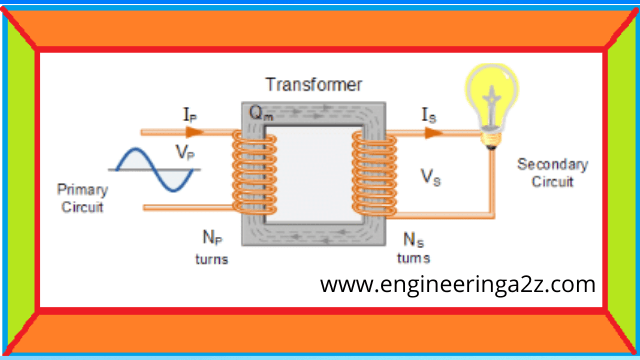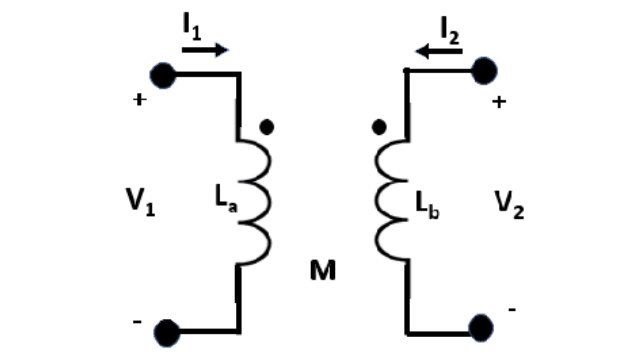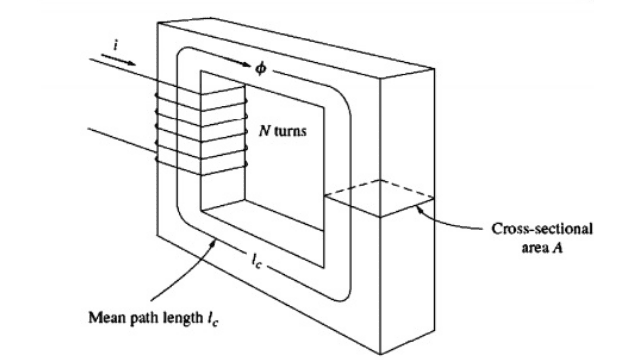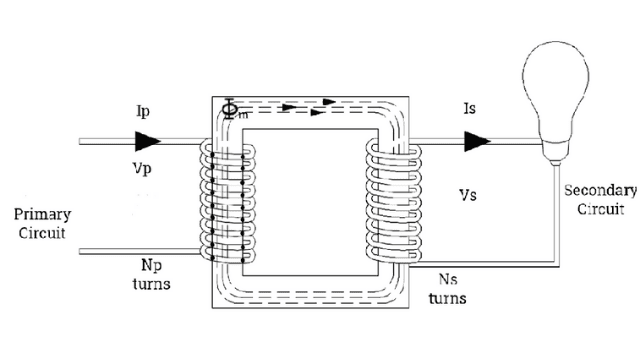
Table of Contents
Transformer
The transformer in the simplest way can be described as a thing that steps up or steps down voltage. In a step up transformer the output voltage is increased and in a step down transformer the output voltage is decreased. In other words the transformer is a static device for transforming electrical energy from one circuit to another without changing the frequency. It can increase or decrease the voltage with a corresponding decrease and increase in current. Transformer can change low alternating voltage to high alternating voltage and high alternating voltage to low alternating voltage and in both cases frequency remain unchanged. The electrical power is generated transmitted and distributed in the form of alternating current through transformer.

Principle of Transformer
It works on the principle of faraday’s laws of electromagnetic induction or mutual induction. “It states that the rate of change of flux linkage with respect to time is directly proportional to the induced EMF in a conductor or a coil“. Hence mutual induction between two or more winding is responsible for transformation action in an electrical transformer.

Construction of Transformer
A single phase transformer consists of primary and secondary winding put on a magnetic core. Both windings are magnetically connected but not electrically both the types of windings and magnetic core in transformer are discussed below.
Primary Winding
The winding which is connected to the electric supply and produce the magnetic flux is called the primary winding. In Other words a primary winding is the winding of transformer that is connected to and receives energy from an external source of electrons.
Magnetic core
Transformer core is static device that transmit power from one source to another through electromagnetic induction. These are pieces of magnetic material with a high magnetic permeability, which is used to guide magnetic field in Transformers. The magnetic flux produced by the primary winding will pass through this low reluctance path linked with secondary winding and create a closed magnetic circuit. The core is made up of thin laminations of high grade silicon steel. To minimise the Eddy current loss the thin laminations of about 0.3 mm to 0.5 mm are used in the core. Each lamination being insulated from each other by a light coat of varnish.

Secondary winding
The flux produced by primary winding passes through the magnetic core, will link with the secondary winding. This winding is connected to the load. “In other words we can say that, the output side or secondary side of the transformer is where the electrical power is sent to the load”. The secondary winding is the coil that delivers the energy at the transformed or changed voltage to the load.
Working Principle of Transformer
The working principle of transformer is based upon Faraday law of electromagnetic induction for mutual induction. “when the AC supply is given to the primary winding with the voltage V and alternating flux ϕ is set up in the core of the transformer, which links with the secondary winding and as a result of it an EMF is induced in it called mutually induced EMF. The direction of these induced EMF is opposite to the applied voltage V this is because of the Lenz’s law Physically there is no electrical connection between the two windings but they are magnetically connected therefore the electrical power is transferred from the primary circuit to the secondary circuit through mutual inductance. The induced EMF in the primary and secondary winding depends upon the rate of change of flux linkage i.e. Ndϕ/dt.

Advantages of Transformer
- It is a static device and there is no moveable parts in it and hence no tear & were of it.
- It requires very little care and maintenance.
- Its life is more.
- It has high efficiency.
- Transmission and distribution becomes cheaper, as a result aluminium or copper is saved.
- Fast transient response.
- Low noise.
Disadvantages of Transformer
- It may require a heat sink.
- It gives out lot of heat which requires cooling. This creates a break in the flow of the current.
- Due to its material in the making of the iron core, there is wastage in the current flow
Frequently Asked Questions (FAQ)
What are the losses occurring in a transformer?
The losses occurring in a transformer, by its nature can be classified into the following types:
Core loss
Copper loss
Dielectric loss and
Stray losses.What are the tests conducted on a transformer?
The tests conducted on a transformer are :
a) Open circuit test or No-load test- In this the secondary terminals of the transformer are left open-circuited.
b) Short circuit test- In this secondary terminals of the transformer are short-circuited.
c) Sumpner’s test.Why are transformers rated in KVA?
The losses occurring in the transformer are core loss and copper loss which are independent of its power factor. Hence the transformer is rated in KVA and not in KW.
Why do transformers hum?
This hum noise in Transformer is caused due to the repeated expansion and contraction of the steel core inside the transformer.The magnetic flux passing through the transformer core varies continuously which expands and contracts the core.






Comments (1)
When I originally commented I clicked the “Notify me when new comments are added” checkbox and now each time a comment is added I get several e-mails with the same comment.
Is there any way you can remove me from that service? Many thanks!